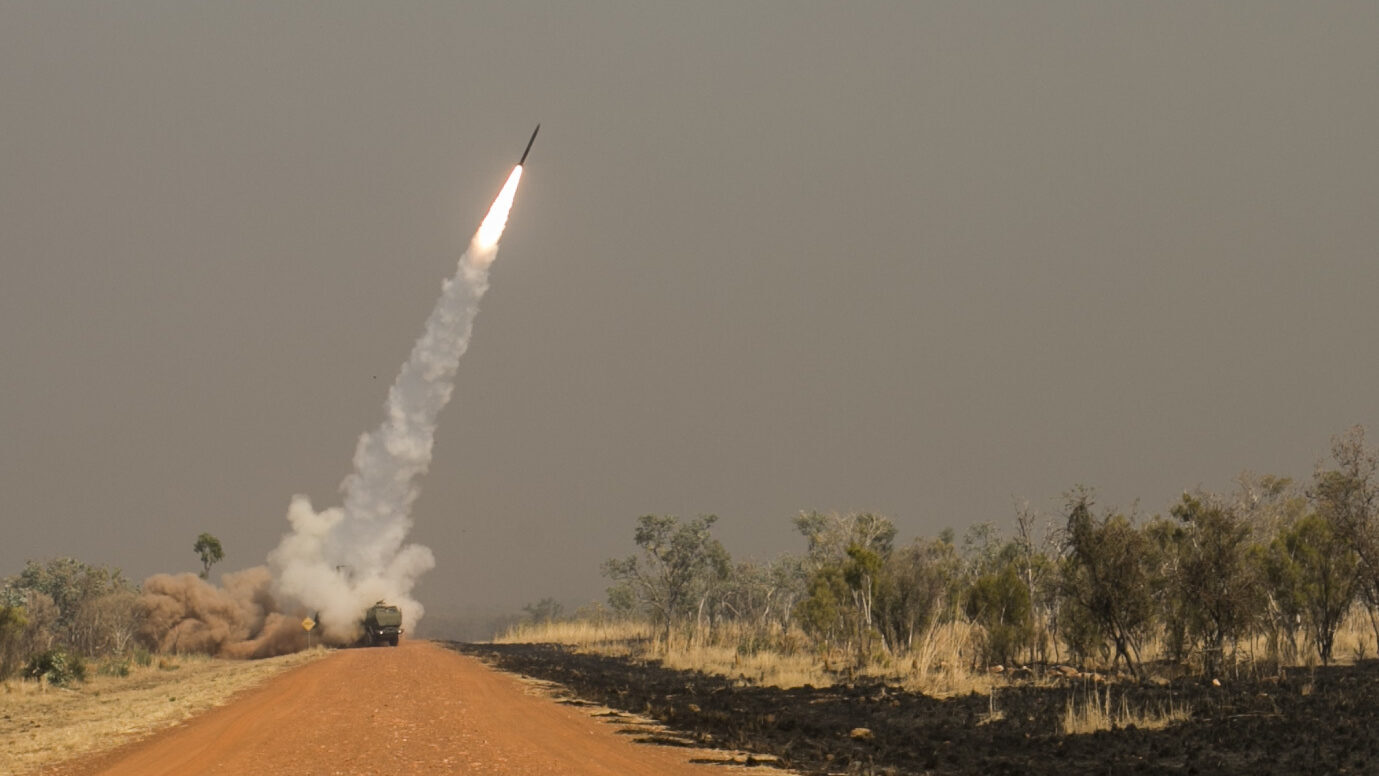A High Mobility Artillery Rocket System (HIMARS) with the 1st Battalion, 181st Field Artillery Regiment fires toward a designated target at Yausubetsu Training Area, Hokkaido, Japan (US Army)
AUSA 2024 — Norway expects to take a major step forward with one of its key land warfare acquisition priorities by selecting a new long-range precision fires system, likely in the “summer” of next year and ahead of entry to service in 2027 or 2028, according to the Nordic nation’s top army official.
Maj. Gen. Lars Lervik, Chief of Staff of the Norwegian Army, told Breaking Defense that Oslo is in the process of receiving offers from industry competitors who have been asked to detail “price, timings, capabilities” and delivery timeframes.
“We are currently in the process of considering different options,” he said. “It’s either a FMS [US Foreign Military Sales] case … or we buy from other manufacturers. We are looking at sometime, hopefully before summer next year, we hope to have a [weapon system selection] decision.”
In August, the US State Department approved the potential sale of 16 Lockheed Martin M142 High Mobility Artillery Rocket Systems (HIMARS) and supporting equipment, valued at $580 million, to Norway. But that approval doesn’t mean the sale is final and, as a rival bid, South Korea’s Hanwha Aerospace is pitching the K239 Chunmoo Multiple Launch Rocket System (MLRS).
Moving from the selection decision to entry to service for the long range fires weapons system, as early as 2027 or 2028, would be possible based on “realistic production times,” suggested Lervik.
Norway has already requested technical information from industry under the Long Range Precision Fire System (LRPF) program, including weapon system guidance performance, munitions communications, warhead target sets, maximum range, flight time, test and qualification procedures, according to a request for information solicitation posted online.
The document calls specifically for a “self-propelled” LRPF capable of protecting northern Norway, launching missiles and guided rockets with a range in excess of 300 kilometers (186 miles). The future platform must also be compatible with Norwegian Command, Control, Communication, and Computers (C4I) systems.
In April, Norway announced a “historic” hike in defense spending, based on expenditure of NOK 1.6 trillion ($150 billion) out to 2036, aligned to a new long-term defense plan that includes commitment to a new long-range, ground based air defense (GBAD) and an expansion of the Norweigian Army to three brigades, instead of one.
Despite such a focus, Lervik acknowledged that “most of the money” on offer will be spent on the Royal Norwegian Navy. Still he suggested the country’s parliament, responsible for approving spending, was right to take the “military advice” of Gen. Eirik Kristoffersen, Chief of Defence of Norway, when approving the spending and defense plans.
“What we are going for is a balanced armed forces, still rather small, but balanced,” Lervik added. “That’s been my key, I think that’s important, not to go too much to one direction. I think that’s what we’re doing with what’s been decided.”
At a broader level, he said that the strategic picture in the High North has not changed significantly, of late, as Russia continues to prioritize war against Ukraine.
Lervik noted he was “more optimistic” about Europe’s ammunition crisis, because of investments by the Norwegian government in Nammo, the country’s main ammunition producer.
“I share [the view] with all my partners, all my colleagues, that we need to restock, both from what has been donated to Ukraine, but also to have sufficient [national] stocks,” he added.











